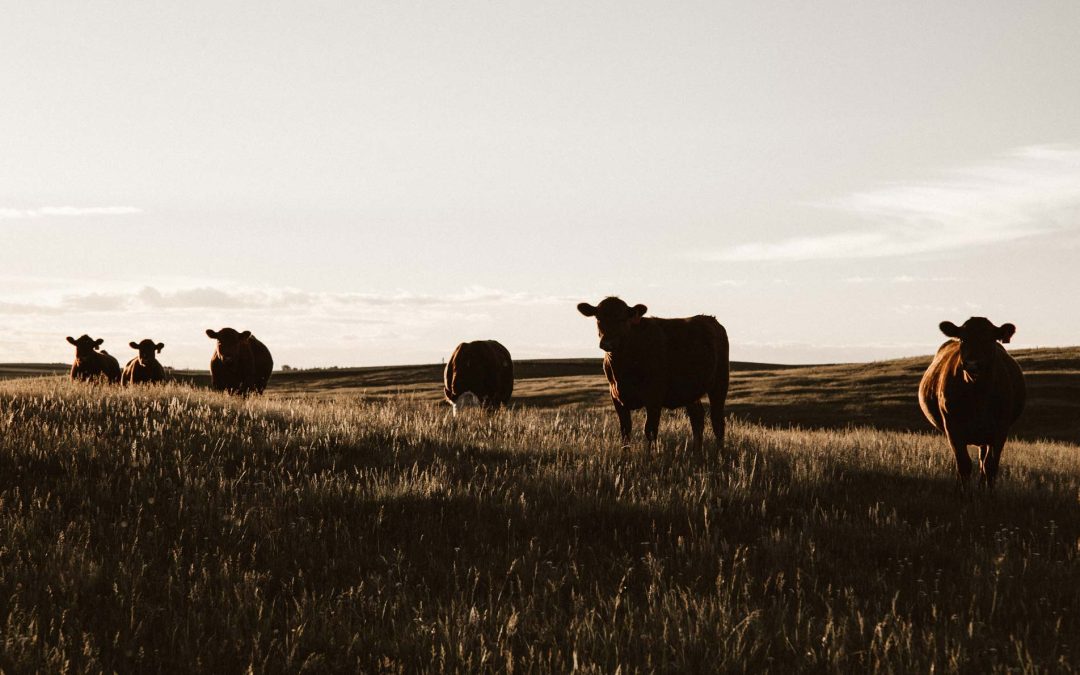We have had a higher-than-usual number of calls about adult cattle with no apparent previous illness being found dead in pastures around the state this year. At the point in which an animal dies from an unknown cause, they immediately become the most valuable animal in the herd. This is especially true in situations where multiple animals die from unknown causes. The value of the deceased animal lies in their ability to provide information for the benefit of the remainder of the herd. When a producer or veterinarian calls me for a consultation on a single or multiple deceased animals, the first thing I offer is a thorough post-mortem exam, called a necropsy in animals or an autopsy in humans.
It can be difficult for a producer to decide if the cost of a necropsy is worthwhile when they have a single dead animal. When multiple animals are deceased, the decision becomes easier as involvement of multiple animals suggests a cause may be environmental or contagious. Findings at necropsy can trigger changes in management to prevent the same fate in the remainder of the herd.
Here are a couple of examples. I was called to a herd that had lost 5 late-bred heifers over the course of 2 weeks. The morning of the phone call, another one had been found dead, so I went straight out and performed a necropsy with sample collection. When I examined the organs, I saw evidence of systemic bacterial infection and evidence of flukes in the liver. When we did some testing on the samples, we identified Clostridium hemolyticum, a bacteria that causes severe disease and death secondary to fluke infestation. This gave us the opportunity to strategically treat the herd for flukes and alter their vaccine strategy to prevent C. hemolyticum infections and the deaths stopped. In another herd, I received a call when the producer was moving cows to a new pasture when one cow laid down, started having trouble breathing, and died. I went out and performed a necropsy on her. She was pale and had an enlarged spleen. Testing of the samples we collected confirmed the diagnosis of anaplasmosis, a disease caused by a blood parasite. This enabled us to develop strategies in the management of that herd to reduce the blood parasite load in the other animals to prevent another one from developing a severe anemia.
There are two options for how to have a necropsy performed should you have an animal die from an unknown cause on your place. One is to take the entire animal to your state or university animal diagnostic laboratory, where a specialist in post-mortem examinations (pathologist) will go through the body, evaluating each organ system and collecting samples. The alternative is to have your veterinarian come to your place and perform a similar post-mortem evaluation. There are advantages and disadvantages to each. Advantages of using the diagnostic lab for the post-mortem is that specialist pathologists evaluate the carcass – this is what they are trained to do and what they do every single day. They are the absolute experts. Disadvantages include the challenges associated with trying to get a large animal transported to the laboratory and the fact that the pathologist does not have the ability to see the environment where the animal was housed. Advantages of having your veterinarian out to perform the post-mortem include the convenience of not having to transport the carcass to the lab and that the veterinarian has the ability to get a complete picture of the animal, its environment, the herdmates, etc. He or she can look at the pasture for toxic plants, evaluate the body condition scores of the rest of the herd, assess the quality of nutrition and other factors that contribute to the whole story of why this animal died.
Here are a few practical tips in case you have an unexplained death on your place:
- Call your veterinarian for advice about the need for necropsy.
- Handle the animal only while wearing protective nitrile gloves, since you don’t yet know what caused the death and whether or not it may affect humans.
- Cover the body with a tarp and weigh the tarp edges down. Scavengers can rapidly damage a carcass, taking with them valuable samples like the eyes. If you’ve got a strong stomach and you find the animal with the eyes intact, use a syringe and needle and withdraw some fluid from the interior of the eye before scavengers have a chance. Place the syringe in a plastic baggie in the refrigerator until you see your veterinarian. This can provide them with a valuable sample to test for things like nitrate toxicity and grass tetany.
- If several deaths have happened on a single pasture, move the herd to a new pasture until a cause is found.
- Think back and make a list of any recent changes in the herd: movement to a new pasture addition of a new animal, purchase of a new load of feed, recent illnesses, changes in the vaccination and deworming program, etc. Even small, seemingly insignificant events can be important clues.
- Check into local laws regarding legal disposal of carcasses and follow them.
We don’t always get an answer with every necropsy. But, we do almost always find at least one area where we can make improvements in the management of the herd by going through the exercise. We certainly hope you don’t find yourself in the situation of unexplained and unexpected deaths in your herd, but if you do, your veterinarian should be your first call to develop a plan for determining the cause and for protecting the remainder of the herd.

